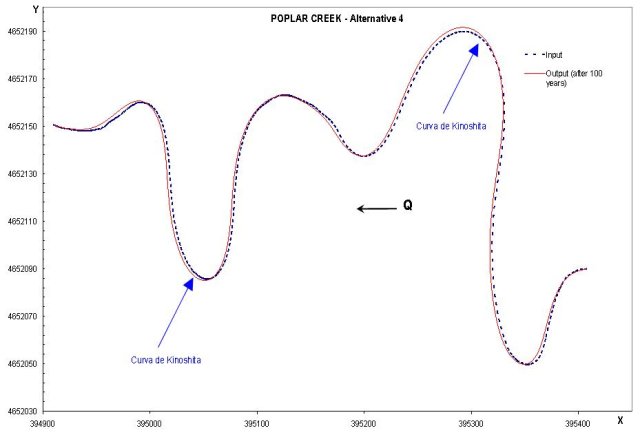River Morphodynamics
River morphodynamics has attracted many research efforts in the last decades. The problem has been attacked via experimental, theoretical and numerical approaches. Yet, there is considerable uncertainty regarding the accuracy of the numerical predictions for real cases. Numerical prediction of flow field, planform migration and sediment transport is considered an important branch of river analysis. This area of research is governed by the complexity of the physical processes that are involved in rivers. This complex system covers physical phenomena such as secondary flows (also known as helical flow or spiral flow), turbulence flows and sediment transport. Additional complexity is introduced by irregular boundaries presented in rivers, which makes even more difficult to obtain accurate results.
The most significant finding of this study is a simplified model for lateral migration and evaluation of meander parameters such as sinuosity, rate of lateral migration. A spatial variability of the bank erosion coefficient is incorporated into the model. The present model has been validated in different natural meanders in Illinois, USA (Poplar Creek, Embarras river, etc.). Generally good agreement exists between calculated planform migration and real migration of river troughout time.
The application of the RVR Meander model in rivers is shown in the picture below.
